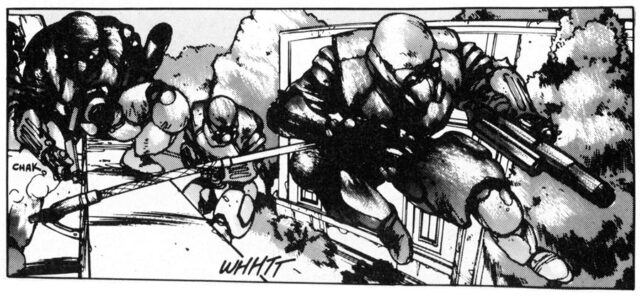Metal Skin Panic MADOX-01 was one of the unsung heroes of the OVA boom. Presented here for the first time is an early design document outlining the OVA’s plot and designs, in both Japanese and English.


Metal Skin Panic MADOX-01 was one of the unsung heroes of the OVA boom. Presented here for the first time is an early design document outlining the OVA’s plot and designs, in both Japanese and English.

Way back in 1985, Hobby Japan (the biggest name in hobby magazines) attempted to diversify with an all-new periodical focused on the broad spectrum of otaku subculture. The experiment lasted three issues.

While a majority of American comic book creators through the 1990s were content with stacking tubes to create weapons and conjure vehicles with childlike reality, mangaka such as Shirow Masamune, sought out minutia in reference and found authenticity via inspiration in the most random of places.

The Emotion logo was created in 1983 — around the same time moai statues made a surreal appearance as spacefaring, laser-vomiting opponents in shooting game series Gradius. Just why is Japan so moé for moai?

A tongue-in-cheek taxonomical breakdown of otaku fandom circa 1985 from the pages of Monthly OUT.

The rise of video in the 1980s inspired plenty of new magazines dedicated to specific genres — particularly horror. Originally positioned as an otaku “jack-of-all-trades” magazine, V-Zone soon pivoted exclusively to horror.

What was a diehard Gundam modeler in 1986 to do if they weren’t satisfied by Bandai’s kits based on the all-new Zeta Gundam? This doujin by Studio Mk-0 offered detailed how-to guides for improving your gunpla

Renzo revisits the classic Otomo artbook ‘Kaba,’ highlighting the world-renowned director’s work outside of anime and manga.

There’s never been a shortage of Gundam garage kits, but in the 1980s multiple manufacturers offered up a plethora of kits based on the designs of Kobayashi and Kondo in an unusual scale.

While part of the Okayama University Manga Club in 1981, Shinji Aramaki (MADOX-01, Appleseed) and other students created what an anonymous Wikipedia editor praised as “a masterpiece of the anime club era.”